Ditapis dengan
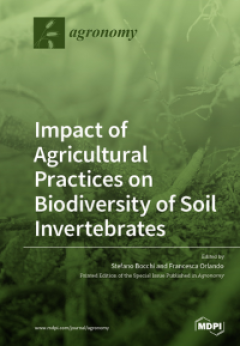
Impact of Agricultural Practices on Biodiversity of Soil Invertebrates
Soil fauna plays a key role in many soil functions, such as organic matter decomposition, humus formation, and nutrient release, modifying soil structure, and improving its fertility. Soil invertebrates play key roles in determining soil suitability for agricultural production and realizing sustainable farming systems. They include an enormous diversity of arthropods, nematodes, and earthworms.…
- Edisi
- -
- ISBN/ISSN
- 978-3-03943-720-7
- Deskripsi Fisik
- 152 hlm.
- Judul Seri
- -
- No. Panggil
- -
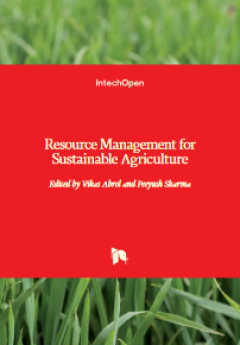
Resource Management for Sustainable Agriculture
In this book, papers pertaining to resource management for sustainable agricultural development are presented in four parts divided into ten chapters. Part I discusses the usage of water and waste management for sustainable agricultural development including aspects like irrigation management to prevent soil and ground water salinization, production of solid fuel from oil palm waste, sustainabl…
- Edisi
- -
- ISBN/ISSN
- 978-953-51-5334-4
- Deskripsi Fisik
- 308 hlm.
- Judul Seri
- -
- No. Panggil
- -
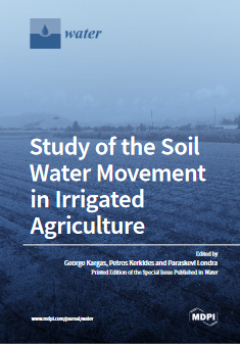
Study of the Soil Water Movement in Irrigated Agriculture
In irrigated agriculture, the study of the various ways water infiltrates into the soils is necessary. In this respect, soil hydraulic properties, such as soil moisture retention curve, diffusivity, and hydraulic conductivity functions, play a crucial role, as they control the infiltration process and the soil water and solute movement. This Special Issue presents the recent developments in the…
- Edisi
- -
- ISBN/ISSN
- 978-3-0365-6195-0
- Deskripsi Fisik
- 182 hlm.
- Judul Seri
- -
- No. Panggil
- -

Understanding the Value of and Reasoning Behind Farmer Adoption of Carbon Cen…
Understanding how to promote farmers’ use of carbon (C) centric practices known to increase soil C sequestration is needed to design information systems and orient policy, investment and environmental markets. Farmers undertake individual and collective actions using techniques that have varied over time and space according to land potential, farming systems, values and, evolving political an…
- Edisi
- -
- ISBN/ISSN
- 978-1-7867-969-5
- Deskripsi Fisik
- 23 hlm.
- Judul Seri
- -
- No. Panggil
- -

Management of Organic Soils to Reduce Soil Organic Carbon Losses
Organic soils of intact peatlands store 1/4 of the global soil organic carbon (SOC). Despite being an important source of methane (CH4), they are climate coolers because they continuously accumulate new organic carbon. However, when these organic soils are drained for agriculture, the resulting aerobic conditions lead to fast decomposition of the peat and the release of carbon dioxide (CO2) and…
- Edisi
- -
- ISBN/ISSN
- 978-1-80146-324-9
- Deskripsi Fisik
- 65 hlm.
- Judul Seri
- -
- No. Panggil
- -

Benefits and Trade-offs of Soil Organic Carbon Sequestration
Soil organic carbon sequestration has received increasing attention due to the important benefits it can have for ecosystem services and in particular food production, climate change mitigation and adaptation. Indeed, soils rich in organic carbon are, in general, more fertile and support plant growth better than carbon-depleted soils. On the other hand, management practices applied to increase …
- Edisi
- -
- ISBN/ISSN
- 978-1-8014-6697-4
- Deskripsi Fisik
- 27 hlm.
- Judul Seri
- -
- No. Panggil
- -

Agricultural Practices to Improve Soil Carbon Sequestration in Rice Paddy Soils
Paddy rice systems are characterized by waterlogged conditions with high potential for CH4 emissions and soil organic carbon (SOC) sequestration. Therefore, it is necessary to evaluate the net global warming potential (GWP) of soil management considering SOC stock changes, and CH4 and N2O fluxes. Green manure application and straw retention slightly enhanced SOC stock, but highly increased net …
- Edisi
- -
- ISBN/ISSN
- 978-1-80146-550-2
- Deskripsi Fisik
- 35 hlm.
- Judul Seri
- -
- No. Panggil
- -
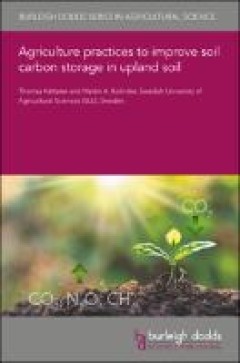
Agriculture Practices to Improve Soil Carbon Storage in Upland Soil
Increasing carbon storage in soils is one way of mitigating climate change. Carbon sequestration in agricultural soils through improved management is particularly interesting, because of low costs and technical readiness. In this chapter, we synthesize current knowledge on the impact of management practices that promote carbon accumulation in upland mineral soils. Following a brief overview of …
- Edisi
- -
- ISBN/ISSN
- 978-1-80146-311-9
- Deskripsi Fisik
- 37 hlm.
- Judul Seri
- -
- No. Panggil
- -
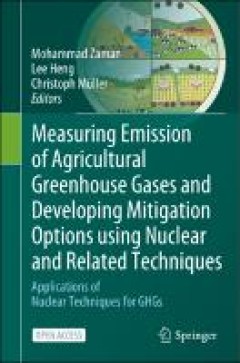
Measuring Emission of Agricultural Greenhouse Gases and Developing Mitigation…
This book is an outcome of the collaboration between the Soil and Water Management & Crop Nutrition Section, Joint FAO/IAEA Division of Nuclear Techniques in Food and Agriculture, Department of Nuclear Sciences and Applications, International Atomic Energy Agency (IAEA), Vienna, Austria, and the German Science Foundation research unit DASIM (Denitrification in Agricultural Soils: Integrated con…
- Edisi
- -
- ISBN/ISSN
- 978-3-030-55396-8
- Deskripsi Fisik
- 375 hlm.
- Judul Seri
- -
- No. Panggil
- -
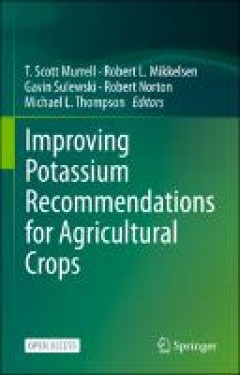
Improving Potassium Recommendations for Agricultural Crops
This book highlights concepts discussed at two international conferences that brought together world-renowned scientists to advance the science of potassium (K) recommendations for crops. There was general agreement that the potassium recommendations currently in general use are oversimplified, outdated, and jeopardize soil, plant, and human health. Accordingly, this book puts forward a signifi…
- Edisi
- -
- ISBN/ISSN
- 978-3-030-59197-7
- Deskripsi Fisik
- 466 hlm.
- Judul Seri
- -
- No. Panggil
- -
 Karya Umum
Karya Umum  Filsafat
Filsafat  Agama
Agama  Ilmu-ilmu Sosial
Ilmu-ilmu Sosial  Bahasa
Bahasa  Ilmu-ilmu Murni
Ilmu-ilmu Murni  Ilmu-ilmu Terapan
Ilmu-ilmu Terapan  Kesenian, Hiburan, dan Olahraga
Kesenian, Hiburan, dan Olahraga  Kesusastraan
Kesusastraan  Geografi dan Sejarah
Geografi dan Sejarah